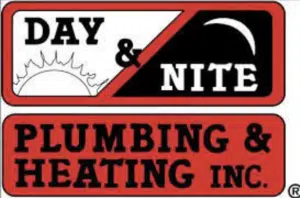It’s your dream home. You make an offer. Offer accepted. You order an inspection. The inspection is done and all is well. Or is it? Homebuyer inspections are the rule these days. Sometimes plumbers are called in to do a more thorough follow-up inspection. Unfortunately, this often happens after the home has already been purchased.
Too many times we find that the homeowner didn’t know the existing condition of their plumbing system… and we end up being the bearer of bad news. Each home’s plumbing system can have its own issues and applications. Here are some common things a plumbing pro would look at before purchasing a home.
Main Sewer
Not long ago we were called by a couple to unclog a main sewer line between their new home and the city sewer. After clearing the drain, we used our sewer camera to inspect the line and determine the cause of the problem. The line was clearly deteriorating; some sections were only held together by the ground around them. Another clog was imminent. Even worse, the line could collapse requiring a major repair or replacement.
Although these homeowners didn’t feel lucky at the time, it was certainly good timing to camera the line prior to collapsing. The pipe was in good enough shape to reline before the problem got worse. Waiting just wasn’t an option. The line was 12-feet deep and went under a detached garage. At the least, it would have been a very costly option.
Drains clog for a reason, but it’s not always obvious. It is strongly recommended that a professional plumber perform a camera inspection on a main sewer line after it has clogged. If you’re purchasing a home, this is doubly important. Imagine in the above scenario knowing the condition of the line prior to the purchase of a home. You can’t always be certain whether the home has had drainage problems, and if so, whether the previous homeowner knew the reason for the clog. A simple camera inspection could make you aware of a hidden and very costly problem prior to the purchase.
Water Heaters
The average water heater lasts about ten years. This depends on the water quality, how the water heater is being used, maintenance, and installation. Water heaters that heat your home, in addition to providing hot water for each of your faucets, tend to have shorter lives.
Consider the location of the tank. Will it ruin your carpet or hard wood floor if it leaks? Will it cause dry wall damage? Is it in your garage on a platform that is really just an extension of a subfloor, with nice flooring on the other side of the wall? In other words, how is this water heater being managed? If it’s in a location where property damage could occur, what will help prevent that?
It’s common to find water heaters placed in areas where they’re out of sight yet could cause a lot of damage if they leak. (Utility closets, mobile home water heater closets, a garage against a finished living space) Even if it was sitting in a pan with a drain, who would ever see it… to know to fix a problem before it causes damage?
Water heater pans can only hold so much water before they overflow. Typically, water heater leaks in these installations are noticed because of the evidence of water and/or the damage caused. Water heaters installed where they can cause property damage when they leak should be replaced as a preventive measure before they leak.
Nearly all manufacturers can determine the age of a water heater from the model and serial number. Have a licensed plumber determine whether it’s up to current code and safely working. Ask the plumber to evaluate and document the size of the water heater when they’re out to perform the inspection, and whether it meets the needs of the home.
Sometimes a home with a soaking tub will have a water heater that’s undersized for that volume of water. Often the kids have moved, or the homeowner doesn’t use the tub any longer, and in order to save money, the water heater was replaced with a smaller unit. It’s always a good idea to find out if the tank is undersized for the home and your family’s needs.
Toilets
One problem homeowners often neglect to fix is a leak at the base of a toilet. The leak often appears small or insignificant, but over time the water will begin to rot the subfloor and even get between the subfloor and the finished floor. Someone unaware of the damage this kind of problem can create, may try to seal this themselves, sometimes making it worse.
Here are some signs to look for: First, look for discoloration and/or warping around the base of the toilet. Second, check if the floor moves or feels soft around the base of the toilet by applying body weight with your foot. Finally, the toilet bowl should not have any movement. It should feel solid, and when grasped on either side, should not rock or slide. If movement is noted it either has a bad seal, the flange is not secured, or the toilet is not secured to the flange.
Conclusion
Buying a home is a big investment. Knowing if you have galvanized water pipes, copper drainpipes, lead closet bends, or an inferior piping system can be handy when negotiating the sale of a home. There are so many types of piping systems and conditions, it’s a good idea to get a whole house plumbing inspection in addition to a water heater and sewer camera inspection. Plan to be there with the plumber and ask plenty of questions, i.e. “What would you do if you were buying this house?” That little bit extra you’ll spend on minor maintenance and inspection can go a long way towards knowing what you’re about to purchase, or whether it’s worth buying at all.
 Since 1954, Day & Nite Plumbing & Heating, a family owned and operated company, has been meeting the plumbing, heating, and air-conditioning needs of homeowners and businesses in Seattle and the surrounding areas. Whether you have a plumbing emergency, or you need a heating and cooling home comfort system, “Do it Right! Call them anytime “Day or Nite.” Be sure to browse here for in-depth answers to homeowner’s top plumbing and heating questions, or send your own questions directly to the expert.
Since 1954, Day & Nite Plumbing & Heating, a family owned and operated company, has been meeting the plumbing, heating, and air-conditioning needs of homeowners and businesses in Seattle and the surrounding areas. Whether you have a plumbing emergency, or you need a heating and cooling home comfort system, “Do it Right! Call them anytime “Day or Nite.” Be sure to browse here for in-depth answers to homeowner’s top plumbing and heating questions, or send your own questions directly to the expert.













